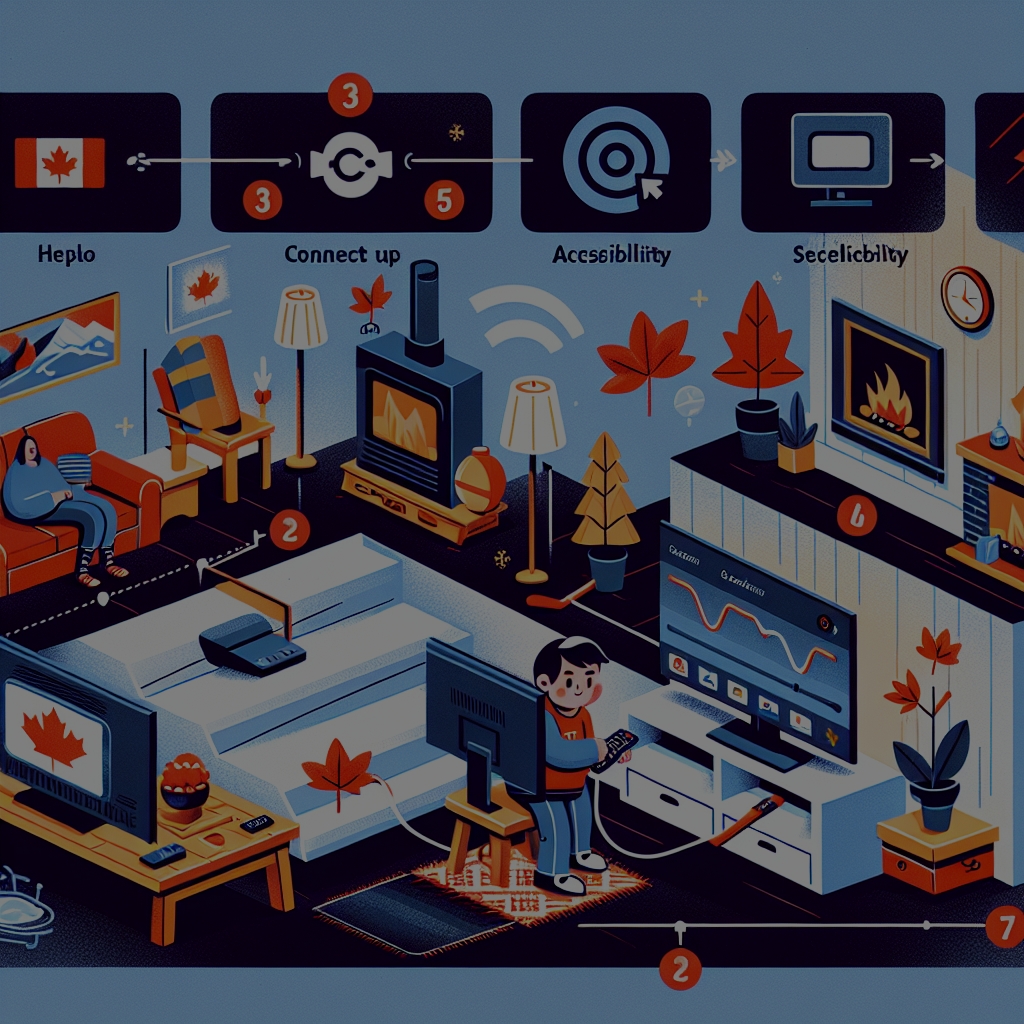In recent years, Internet Protocol Television (IPTV) has gained significant traction as a popular alternative to traditional cable services in Canada. With the ability to stream a multitude of channels and on-demand content over the internet, IPTV offers flexibility and variety to viewers. However, setting up IPTV services may seem daunting, especially for those not well-versed in technology. This guide seeks to demystify the process, providing you with a comprehensive understanding of IPTV, the necessary equipment, and a step-by-step installation guide.
Understanding IPTV: What You Need to Know for Setup
IPTV stands for Internet Protocol Television, a method of delivering television content through the internet instead of traditional broadcast methods. Unlike cable or satellite television, which rely on a dedicated broadcasting signal, IPTV streams content over the internet, allowing users to access a wide array of channels and programs without the limitations of conventional broadcasting. In Canada, IPTV services can range from subscription-based platforms to free streaming alternatives, catering to diverse viewing preferences.
One of the significant advantages of IPTV is its flexibility. Users can often choose between live TV channels, on-demand content, and even cloud-based DVR services, providing a tailored viewing experience. Furthermore, IPTV is compatible with various devices, including smart TVs, tablets, smartphones, and computers, allowing users to watch their favorite shows anytime and anywhere. However, it is vital to be aware of the legalities surrounding IPTV services, as some providers may offer pirated content, which is illegal in Canada.
Before setting up IPTV, it’s crucial to research different service providers and their offerings. Many companies provide a variety of channels and features; hence, understanding your specific viewing needs can help streamline the selection process. Additionally, reading reviews and testimonials can provide insights into customer satisfaction and service reliability, ensuring you choose a provider that meets your expectations.
Lastly, you should familiarize yourself with the terms and conditions of your chosen IPTV service. Understanding the billing cycle, cancellation policies, and any hidden fees can help avoid disappointment later on. With a solid grasp of what IPTV entails, you’re now ready to consider the necessary equipment and internet requirements for a seamless experience.
Essential Equipment and Internet Requirements for IPTV
To enjoy IPTV services, having the right equipment is essential. At a minimum, you’ll need a reliable device capable of streaming content, such as a smart TV, streaming media player (like Roku, Apple TV, or Amazon Fire Stick), or a computer. If you’re using a smart TV, ensure it has built-in support for your chosen IPTV app or service. Alternatively, if your TV doesn’t support apps, a streaming media player can bridge the gap and provide a user-friendly interface.
In addition to your viewing device, a stable internet connection is crucial for a smooth IPTV experience. Most experts recommend a broadband internet speed of at least 10 Mbps for standard definition content and 25 Mbps for high definition. If you plan to stream multiple shows simultaneously, you may require even higher speeds to avoid buffering and interruptions. It’s advisable to test your internet speed using reliable online tools to ensure it meets the demands of IPTV streaming.
Moreover, consider your home network setup. Using a wired Ethernet connection is often more reliable than Wi-Fi, as it minimizes the risk of signal interference and dropout. If a wired connection isn’t feasible, ensure that your Wi-Fi router is high quality and positioned optimally in your home to provide the best coverage. Additionally, reducing the number of devices connected to your network during streaming can also enhance performance.
Lastly, it is important to consider a VPN (Virtual Private Network) if you are accessing international IPTV services. A VPN can help protect your privacy by masking your IP address and allowing you to bypass geo-restrictions. However, make sure to choose a reputable VPN provider, as using a low-quality VPN can lead to slower speeds and a poor streaming experience.
Step-by-Step Installation: Your Guide to IPTV Services
Once you have your equipment and internet requirements sorted out, it’s time to install your IPTV service. The first step is to subscribe to an IPTV provider that suits your needs. After subscribing, you will typically receive an email with installation instructions and login credentials. Make sure to keep this information handy, as you will need it during the installation process.
Next, download the necessary application for your IPTV service on your streaming device. For instance, if you’re using a smart TV or streaming media player, navigate to the app store and search for the IPTV app recommended by your provider. Once found, download and install the application. If you’re using a computer, you may need to visit the provider’s website for downloading software compatible with your operating system.
After installing the app, open it and input the login credentials you received at the time of your subscription. This will usually include a username and password. Once logged in, you might be required to configure your settings, such as adding channels to your favorites or adjusting quality settings based on your internet speed. Follow the on-screen prompts to complete this process.
Finally, once everything is set up, take a few moments to test the service. Browse through the channels, check for the availability of your favorite shows, and explore the on-demand options. If you encounter any issues, consult the provider’s customer support or online resources for troubleshooting tips. With your IPTV service fully operational, you can now enjoy a new world of streaming entertainment at your fingertips.
Setting up IPTV services in Canada can be a straightforward process when you break it down into manageable steps. By understanding the fundamentals of IPTV, securing the right equipment and internet connection, and following a systematic installation guide, you can enjoy a diverse content library tailored to your viewing preferences. As the landscape of television continues to evolve, IPTV presents an exciting and flexible option for consumers looking to enhance their entertainment experience. Embrace the future of television, and enjoy the convenience and variety that IPTV has to offer.


